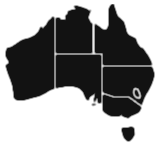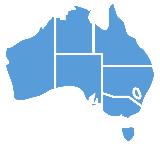Keywords: it, she, he, there, that, the, this, him, her, then
Found 1 variant for this sign (click on video to enlarge):
Sign Definition
As a Pointing Sign
1. Used to refer to a location that is not near either the signer or the person addressed. English = there.
2. Used to refer to something or someone separate and different from the signer and the person they are addressing. If the thing or other person is real and located in the situation, then you point to where it/he/she is located, otherwise you point to where you imagine it/he/she is located. When the pointing sign is made immediately before or after a verb sign, you usually mean that the thing or the other person does the action of the verb, or is affected by the action of the verb. English = it (thing); he, him (male); she, her (female); they, them (gender unimportant).
3. When the pointing sign is made immediately before or after a noun sign, the signer usually expects the addressee to know which person or thing they mean because it is has already been talked about in the conversation or it is common knowledge. When used in this way, the signer is often not thinking of, and not really pointing to, any particular location (so it can be point at ‘odd’ angles). The sign can last for only a very brief time with very little movement. English = the.
4. When the pointing sign is made immediately before or after a noun sign and is made with stress (longer movement, more directed) the signer usually means a particular or special thing or person which has already been talked about in the conversation or which contrasts with something else which as already been mentioned. English = this, that.
5. Used to refer to a time that is not the present. English = then.
Augmented Meaning
1. By extending your arm further away from yourself and/or directing the point higher you mean the location or the referent is further away (or even to some imaginary place) or the time is in the distant past or future.
2. By repeating the pointing movement you are stressing the sign, meaning that the location, referent or time is particular or special in some way.
Note
1. The actions of pointing to yourself or to the person or people you are talking to are listed in this dictionary at two separate signs. One has the keywords ‘I’ and ‘me’, and the other has the keyword ‘you’. However, if you point to other things or locations in the signing space, the pointing action can have many uses and meanings in Auslan depending on the context (both where you are pointing and what you have just signed) and if you modify the pointing action. These different uses and meanings are grouped together into a couple of entries according to some common ways of modifying the pointing action and the meanings they have. If you search for a keyword associated with one of these pointing signs you will be taken to the most appropriate entry in the dictionary.

